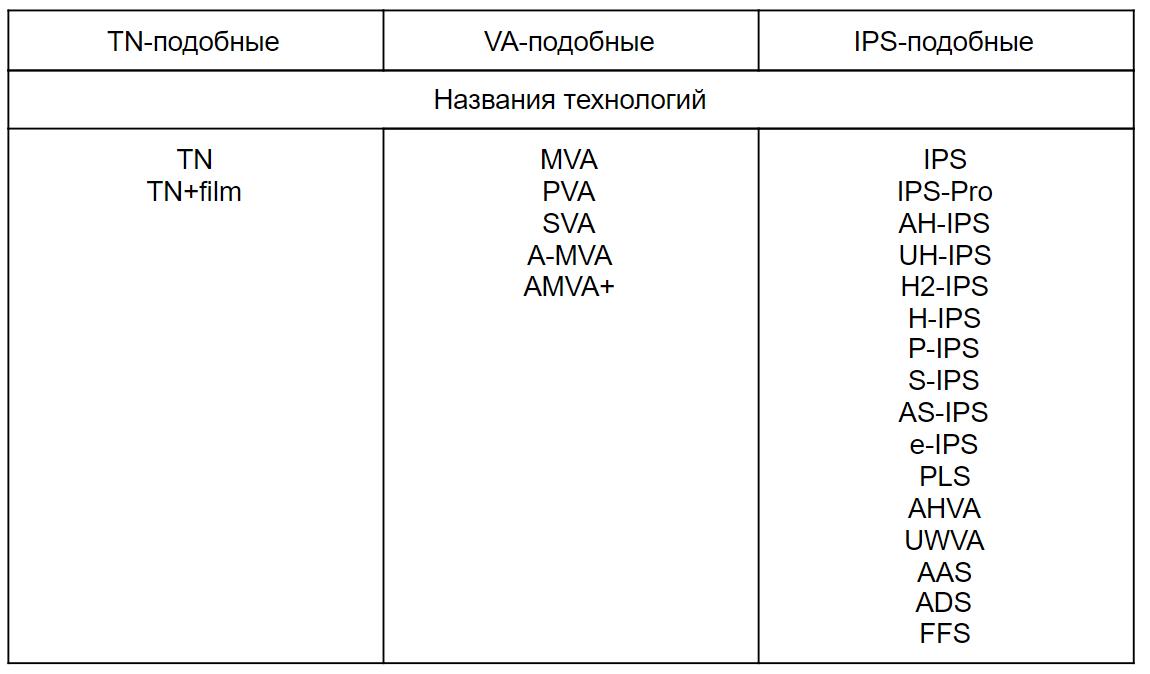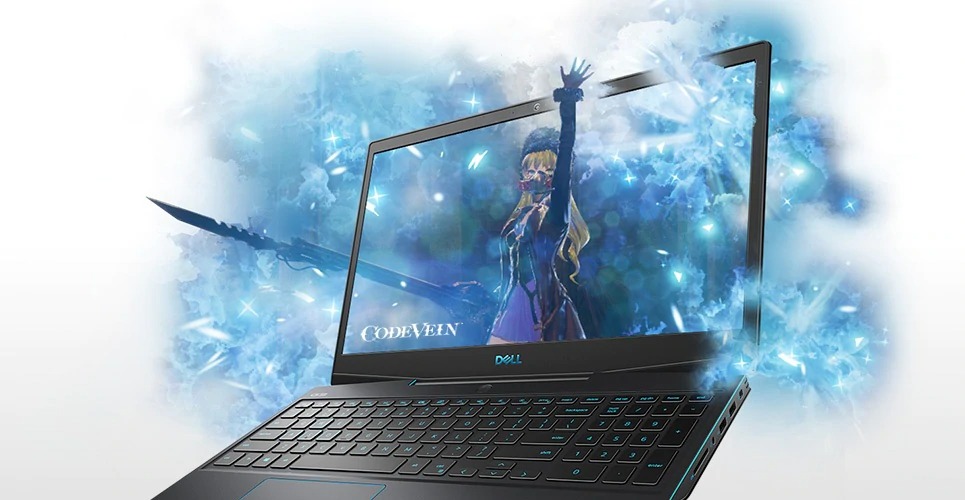What are laptop displays? Parsing
We have already had a lot of videos about displays: we disassembled all types of LCD-matrices in TVs. We made one of the most detailed materials about all types of OLED in smartphones and TV. We also told you about mini-LED and microLED-displays of the future. But we have never talked about displays in laptops. But laptop displays have their own special specifics. Therefore, today we will dive deeply into the variety of laptop displays. Let’s take a look at all the scary acronyms and find out how marketers mislead us?
Let’s figure out how to find out the model and type of display in your laptop? And let’s look at specific examples of laptops and displays.
What are matrices?
Let’s start with general information. What kind of matrices are there and what are the advantages and disadvantages of each type?
Despite all the variety of displays in the world, there are only 4 types of matrices:
- TN-like
- VA-like
- IPS-like
- OLED-like
TN – Twisted Nematic
TN is the cheapest matrix. Their main drawback is the small vertical viewing angles, which is a particularly critical problem for notebooks. Any deviation of the display up and down immediately entails serious color distortion, and few people will like this.
The second major drawback is poor color rendering. As a rule, TN displays have a close color depth: 6 bits per channel. And 8 bits per channel is achieved due to FRC – Frame rate control, that is, fast blinking of subpixels.
Subpixels blink quickly, because of this, their brightness is dimmed and we can mix colors in different proportions, from which we get additional shades. And we have 6 bits + 2 FRC bits.
As a rule, you cannot tell real 8 bits from 6 bits + FRC by eye. But for people sensitive to flicker, FRC monitors are not the best choice. FRC flicker can be as high as 30Hz, which is very small and super noticeable. In short, sometimes FRC is worse than PWM.
On the other hand, TN monitors have an important advantage – it is a very fast response – 1 ms and below. This is very important for games. Therefore, for gaming monitors, TN-matrices with a high hertz of 120 Hz and above are a rational choice.
By the way, in the case of TN matrices, there is a life hack. The higher their resolution, the higher the viewing angles. Therefore, in theory, a modern TN-matrix with a high pixel density can produce a pretty decent picture.
VA – Vertical Alignment
And these abbreviations are important to know. Why? Often, even for one model of laptops, various screen configurations are used. Why is that? Let’s figure it out. Today we have just the people’s gaming laptop from Dell for this. It has three types of screens.
VA-matrices give a much better image. Unlike TN, they have excellent vertical viewing angles and decent horizontal viewing angles, but still lower than IPS.
In general, vertical viewing angles are critical for notebooks. It is unlikely that you will often look at the screen from the side, but for TV this can be a problem.
Also, the VA matrix has good color rendition. They give an honest color depth of 8 bits per channel, or 8 + 2 FRC bits. Therefore, such matrices may even be suitable for working with color, but naturally, unprofessional. And the main advantage of such matrices is deep black color, which means high contrast.
The response speed of VA matrices is slower than that of TN and is plus / minus comparable to IPS. This is 5-10 ms. Therefore, the fastest VA monitors are quite suitable for sweaty skating rinks in a shooter game. And in general, modern VA matrices are a good option for consumption of content and games. But the most balanced and desirable type of matrix in laptops is still IPS.
IPS – In-plane switching
IPS matrices have better color rendition. They deliver true color depth of 10 bits per channel and are therefore best suited for professional color work. The response time of expensive IPS is also decent, starting at 5ms. There are even displays that advertise 1ms response time, but don’t believe this is a tricky marketing ploy.
However, IPS is almost perfect for everything. But they have a drawback – the black level.
IPS matrices poorly block background illumination, which is why the black color in such matrices can have a purple tint. This is especially noticeable on large screens. Therefore, IPS in TVs, as a rule, is not used. But in monitors and laptops, this effect is less pronounced, so IPS is still our everything. Although in the future, everything may change. Now more and more laptop models with OLED screens began to appear.
OLED – Organic Light-Emitting Diode
And certainly not just like that. OLED has many advantages:
- True black
- Wide color gamut
- Low response time, less than 1ms.
- Compact design. The pixels glow on their own, so there is no need to do LED backlighting.
But there are also significant disadvantages:
- Such displays will burn out. The problem is still not resolved, so we do not know exactly how such displays will show themselves when displaying static interface elements.
- Large OLED displays have a grainy effect on uniform colors called the MURA effect.
- PWM is often used to adjust brightness in OLED.
- And of course OLEDs are expensive.
Therefore, OLED in laptops is still exotic. Therefore, we will not dwell on such displays. But now let’s talk about all the other types in more detail.
Various LCD technologies
It would seem that what is the problem? We learned about the pros and cons of all technologies and now each of us can choose what suits him. But this is not easy to do, because it is not easy to determine which display in a laptop you will actually get. And the problem here is marketing.
The fact is that there are a huge number of varieties of matrix technologies and they are all called differently. Take a look at this list, it’s easy to get confused here.

But in addition to this list of names that we can accurately attribute to a certain type of display, there is also a number of “marketing” designations that can mean anything at all.

First, there are the abbreviations SVA, WVA and EWV.
SVA stands for Standard View Angle, which simply means Standard View Angle. In practice, this is how ordinary TN-matrices or their slightly improved versions TN + film are denoted. In other words, this technology has nothing to do with a real SVA matrix – Super Vertical Alignment, which refers to VA-like matrices.
It seems like such a substitution of the concept is used only in HP laptops. Nevertheless, be careful: no one guarantees that this technique will not be adopted by other manufacturers.
A similar story with the abbreviations WVA – Wide Viewing Angles and EWV – Enhanced Wide Viewing. It is so simply indicated that the display has wide viewing angles. In this case, EWV is always a TN matrix. But WVA – can in fact turn out to be anything at all: a TN-matrix, and VA and IPS. At the same time, all this should not be confused with AHVA and UWVA technologies, which are varieties of IPS matrices.
- AHVA (Advanced Hyper-Viewing Angle) – developed by AU Optronics.
- UWVA (Ultra Wide View Angle) is the marketing designation for an IPS matrix.
And, of course, the most interesting situation is with IPS-like matrices or IPS-level matrices. This term did not appear out of nowhere.
The fact is that IPS is not only the name of the technology, but also a trademark that belongs to LG.
Therefore, only LG has the right to call its displays IPS. Therefore, the rest of the manufacturers had no choice but to come up with something of their own, and it so happened that everyone began to use the term IPS-level matrix. On the other hand, since this is a rather vague term, a real IPS or a very pumped VA can be hidden behind the level.
Moreover, stores often overlook that this is an IPS-like matrix and simply write IPS. Therefore, it is impossible to believe the specified characteristics on the network.
How to determine the type of matrix?
Let’s talk about how we can survive in all this confusion. How to buy a complete set of laptop with the correct type of display? Or, if you have already bought a laptop, how can you check what you got?
Take, for example, the DELL G3 15 budget gaming laptop, this is just a difficult option.
The official page indicates that there are three types of matrix:
- 60 Hz, 220 nits
- 60 Hz, 300 nits
- 144 Hz, 300 nits
All three options are WVA matrices with FHD resolution.
We know that WVA is just wide viewing angles, so it can mean anything.
Therefore, before buying, you must definitely google the reviews to determine which matrix is actually installed. But you need to look at the reviews on the configuration that interests you. For example, for this model, complete with a 144 Hz display, there is a review on notebookcheck-ru… By the way, this is a great resource, we advise everyone.
The guys indicated not only the type of matrix, but also the specific model produced by AU Optronics. Who doesn’t know, this is a very large display manufacturer.
Then we google this model and follow the link to the site Panelook.com – this is the most detailed resource about display matrices. It’s like GSMARENA – only for screens.
And we see that the AHVA type display is used here, which is very good. Because it is one of the most advanced IPS-like display technologies. This is the first IPS display with 144Hz refresh rate and 4ms response time. In short, we were lucky here.
But let’s check. which display is specifically in this instance.
To do this, install the utility AIDA64… We launch it. Next Display -> Monitor. And then we google the data from the lines: Monitor Name, Monitor ID and Model.
It turned out to be a Dell FNVDR with a Sharp LQ156D1JW04 (SHP1436) matrix.
By the way, if, for example, AIDA does not give you the model name or you have broken the display in your laptop and want to find a replacement and you are not ready to stop at anything. The display model is always indicated on the back of the matrix, so by removing the top cover of the laptop you can find out the model.
And the main life hack. If you have taken the cheapest package with TN-matrix, you can very often make an upgrade by simply ordering a display from the more expensive package. This is information for thought.
Other characteristics

In addition to the type of matrix, other characteristics should be considered.
First of all, it is the color gamut. For comfortable everyday use, about 57-63% of the sRGB color space is usually enough, this is about 45% NTSC.
This display is enough for viewing content, playing games, and even editing photos and videos at an amateur level.
And for professional color work, you need a monitor with 72% NTSC or 90-100% sRGB coverage. This is already a very good display. In this laptop, for example, the SRGB coverage is 94%.
A color gamut greater than 100% SRGB is needed only for printing or editing HDR video, that is, these are very narrow areas.

The brightness of the monitor is also important, especially if you like to work with your laptop on the road or outdoors, on the veranda. Here’s a story: in the sun, it will work normally at a brightness of 450 nits. There are very few such displays and this is a premium segment. And indoors, 250 nits is enough for you with a margin.
Well, decide for yourself whether to choose a glossy or matte monitor. Professionals often prefer matte, but many also take glossy.
We hope that today, thanks to us, you have learned even more about the complex and incomprehensible world of all kinds of displays and we have told you something new and important. That’s all for today.



